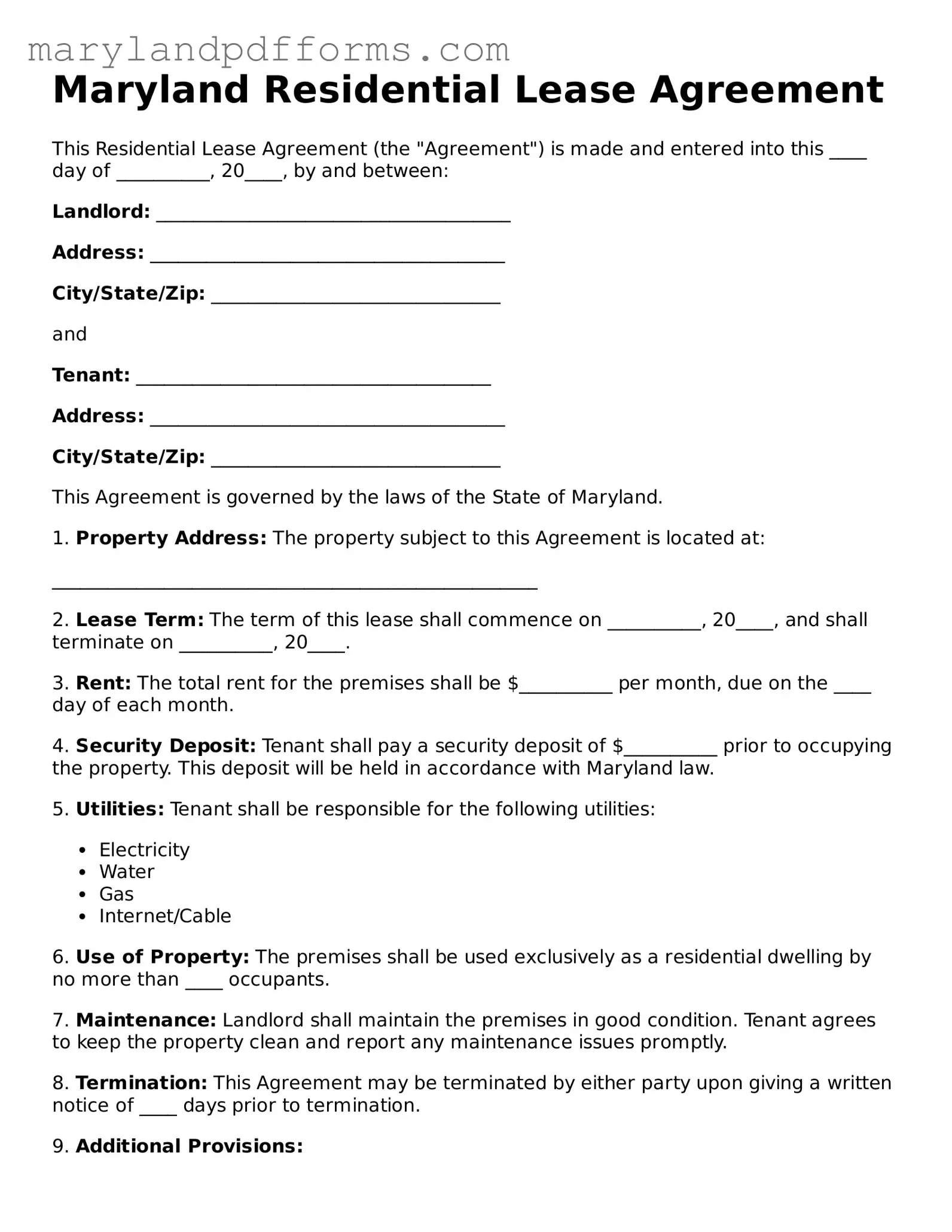Free Residential Lease Agreement Document for the State of Maryland
A Maryland Residential Lease Agreement is a legal document that outlines the terms and conditions between a landlord and a tenant for renting a residential property. This agreement serves to protect the rights of both parties and ensures clarity regarding rent, duration, and responsibilities. Ready to get started? Fill out the form by clicking the button below.
Fill Out Residential Lease Agreement Now
